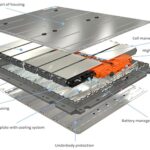Connectors on autonomous vehicles can be classified by their mechanical characteristics and their electrical capabilities. Numerous types of connectors are needed when designing autonomous vehicles.
This FAQ begins by looking at connectors’ electrical characteristics, primarily frequency capability, for specific automotive applications, then reviews some of the mechanical characteristics demanded in automotive systems.
The Society of Automotive Engineers (SAE) J3016 classification systems for vehicle autonomy define six levels of performance from zero autonomy (Level 0) up to full autonomy (Level 5). As vehicles with higher levels of autonomy are being rolled out, the demands on connector performance grow.
One important factor is the increasing data rates associated with higher levels of vehicle autonomy (Figure 1).

Figure 1. Automotive connectivity data rates and typical applications (Image: TE Connectivity).
Basic systems needed to support Level 0 autonomy include 150 Mbps in-vehicle networks that provide information for the driver to act on, including vehicle operational status and simple applications like navigation. Systems using these connectors include battery control modules for hybrid electric vehicles (HEVs) and battery electric vehicles (BEVs), engine control modules in internal combustion engine (ICE) vehicles, airbags, headlamps, steering, audio systems, and so on.
Media-oriented systems transport (MOST) high-speed multimedia networking uses plastic optical (POF) connectors like MOST25 or MOST150 or wired conductors in MOST50 or MOST150 physical layers to transmit audio, video, voice, and data signals with data rates from 150 Mbps up to 1 Gbps. Some systems can support automation up to Level 1 for basic assisted driving.
Data rates from 3 to 12 Gbps are needed to support higher performance in-vehicle network solutions for more immersive driver information systems like real-time high-definition (HD) video. Connectors will be needed for unshielded twisted pair (UTP) and shielded twisted pair (STP) as defined in 100BASE-T1 and 1000BASE-T1 specifications. Applications will include Level 1 driver assistance functions like pedestrian warning, blind spot detection, and lane change detection. Some partial automation systems like emergency braking and adaptive cruise control support autonomy Level 2.
Moving up to autonomy Levels 3 & 4 will require large quantities of real-time data from a plethora of sensors driving data rates up to 24 Gbps. Lidar, radar, video, infrared, and other technologies will generate large quantities of uncompressed data for safety-critical applications like hands-free driving.
Coaxial connectors and optical connectivity will be needed for many of these applications. Increasing autonomy demands increased connectivity outside the vehicle and the growing use of vehicle-to-everything (V2X) connectivity. That will require RF connectors as well as high-speed data connectors. RF connectors will be needed for vehicle-to-vehicle (V2V), vehicle-to-infrastructure (V2I), vehicle-to-pedestrian (V2P), and vehicle-to-network (V2N) communications. Connectivity will be needed to support IEEE 802.11p, WLAN technology, and C-V2X cellular communications.
Moving to Levels 4 and 5 will require new approaches to connectivity, including the development of dielectric waveguide (DWG) optical connectivity for data rates of 24 Gbps and higher. The connectivity demands of Level 5 autonomous vehicles will mirror those of today’s supercomputers to support the concurrent use of advanced artificial intelligence algorithms for object recognition and decision-making. They will demand a mix of high-performance electrical and optical connector technologies, some of which are still to be developed.
Mechanical considerations
General mechanical considerations include wide operating temperature ranges up to 125 or even 150 °C in some applications, compact designs with contact pitches as low as 0.2 mm, and tolerance for high vibration levels.
Some common connector styles include (Figure 2):
- Board-to-board connectors include floating, genderless, and contactless connectors that can absorb misalignment and still support high data rates.
- Flexible flat cable (FFC) and flexible printed cable (FPC) to board connectors. These interconnect systems feature high-density, narrow form factors and fit in tight spaces. Advanced versions like twin axial cables can support very high data rates.
- Wire-to-board connectors are needed for low-voltage differential signaling (LVDS) applications, power delivery, and optical and coaxial cables.
- Wire-to-wire connectors are used for connecting modules to the wiring harness and must be vibration tolerant, with keyed housing to ensure proper connection.

Figure 2. Examples of connectors for advanced driver assistance systems and autonomy levels 2 and higher (Image: Hirose).
Summary
A range of connectors are needed to support autonomous vehicles. Data rates up to 24 Gbps and higher will require the development of new connector technologies like DWG optical connectivity. In addition to supporting high data rates, connectors in autonomous vehicles need to be environmentally and mechanically rugged, compact, and lightweight.
References
- 10 Recommended Connectors for Automatic Operation and ADAS, Hirose
- Reliable and Robust Connections for In-Vehicle Infotainment and ADAS Applications, Molex
- The Road to Autonomous Driving, TE Connectivity
You may also like:
Filed Under: Connectors, FAQ, Featured





Tell Us What You Think!
You must be logged in to post a comment.